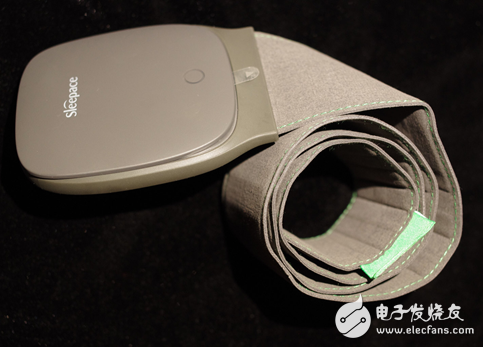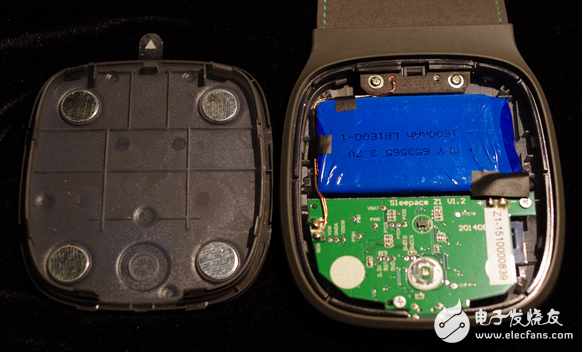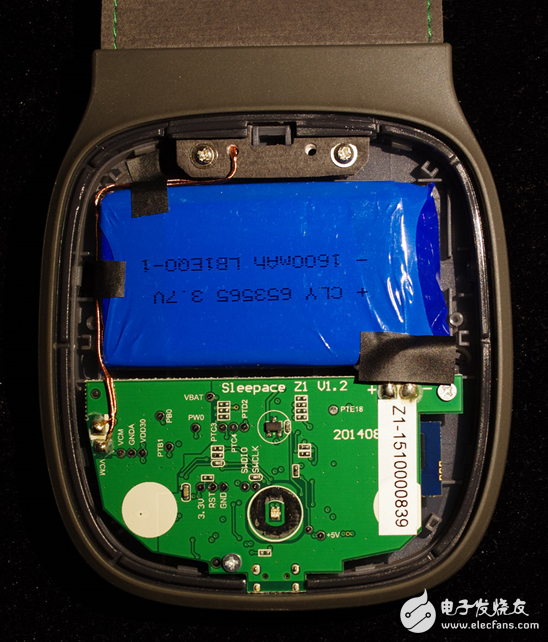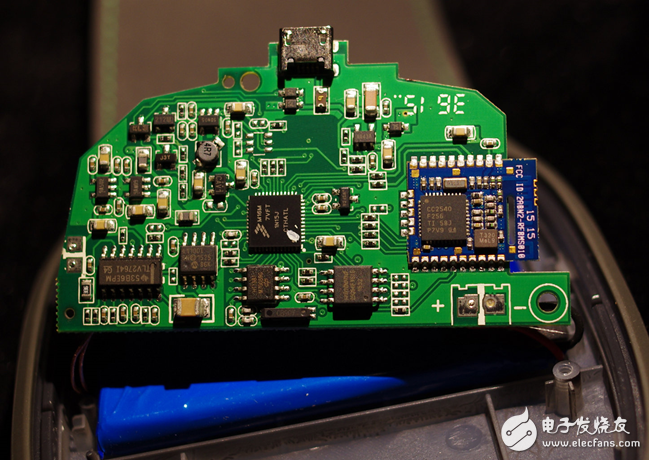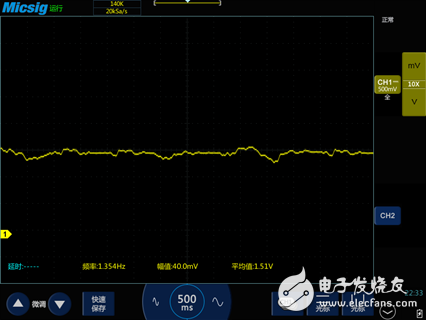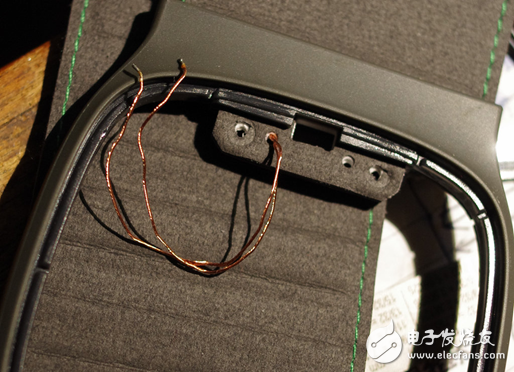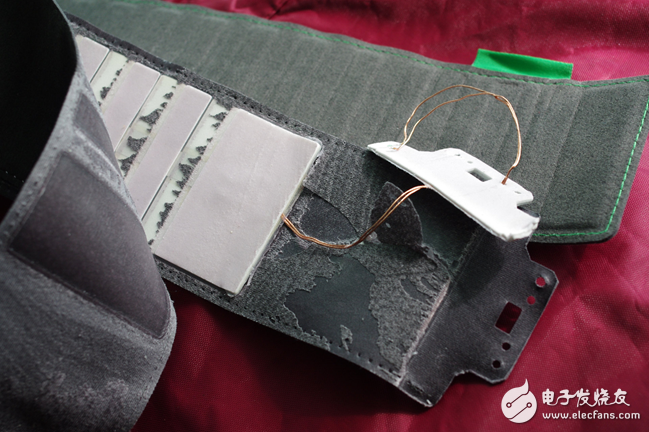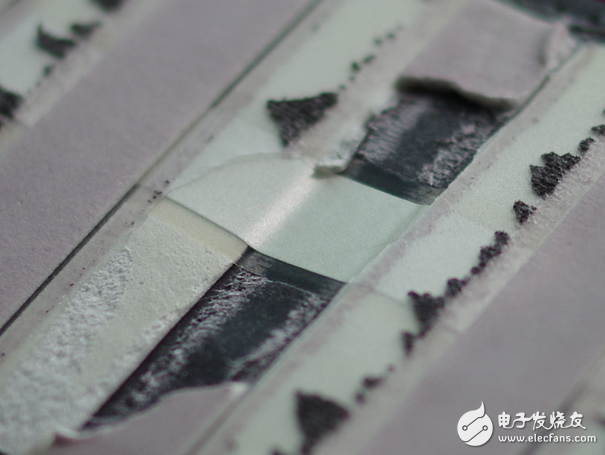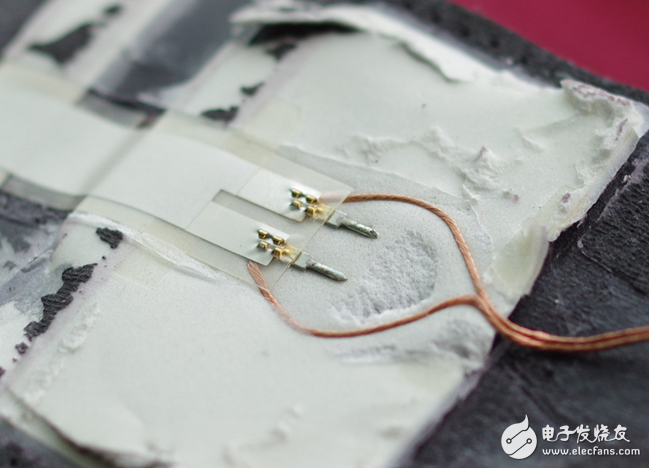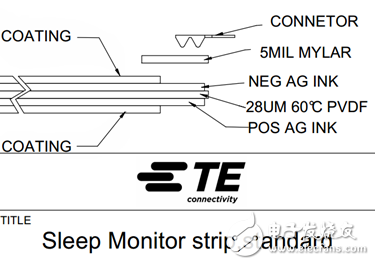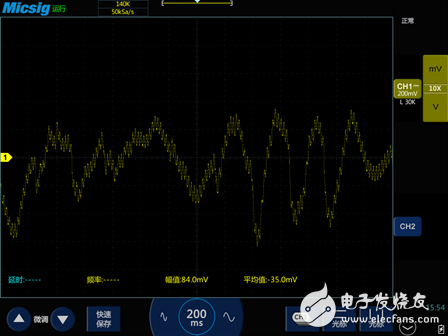Sleepace (Chinese name "Enjoying Sleep") is the brand of Shenzhen Megagica Technology Development Co., Ltd. and its RestOn smart sleep monitor is the world's first portable non-worn sleep monitor, launched in 2014. This sleep monitor can detect heart rate, breathing, physical activity and other physical signs in real time, and analyze sleep status. It does not have an electrode that touches human skin, nor does it need to be worn on any part of the body. Instead, it collects data through a sensor strip that is 80 cm long, 6.4 cm wide, and only about 2 mm thick. When used, this sensor strip can be monitored simply by placing it between the sheet and the mattress. This sensor strip is integrated with the monitor body. When not in use, it can be rolled up and stowed, and it can be easily carried when traveling. The friction between the sensor belt and the bed sheet mattress allows the main part of the monitor to hang at the bedside and not fall off. The back of the monitor is a curved back cover, but there is no screw hole on the back cover. There is a cover that can be removed at any time on the front of the monitor, and it is attracted to the main body by magnetic force. Separation of the cover, you can see the illustration of the operation method, the cover towards the start of the shutdown control. Replace the cover in the direction indicated by the power on and the green light on it will light for a few seconds to indicate normal power on. If you remove the cover at any time, the monitor will enter the off state. Below the movable cover is the front cover of the monitor, which is also a screwless design. In order to dismantle, the author tried to start from behind the edge of the gap, forcibly open the back cover, but in the end it was only by opening the front cover to successfully open the machine. In fact, the front cover and the rear cover are buckled with each other at multiple places, and are not interlocked with the frame. Four magnets are embedded in the front cover so that they can be attracted to the magnets in the movable cover plate to play a role in positioning. The internal space of the machine is flat, with lithium batteries and circuit boards each occupying half. In addition to the circuit board connected to the battery, there are two more enameled wire connection sensor strips. The author guessed from the silkscreen of the test point mark on the circuit board that this monitor uses the ARM Cortex-m series MCU as the main control, and the main components are on the other side of the circuit board. In addition to the two-color LED, this side has a SOT-23 component. I suspect it is a Hall (magnetic) sensor that detects the orientation of the moving cover. Correspondingly, there should be five magnets in the movable cover plate, one more than the front cover. The author conjectures that four of the magnets are aligned with the front cover, and the fifth magnet is located in the Hall sensor when the cover plate is placed in the positive direction. Above. It is easy to remove the two screws and remove the circuit board. On the right side of the other side of the board, there is a small PCB module that is easy to notice because it uses different colors. The author speculates that this is TI's CC2540 low-power Bluetooth solution. In the center of the board is the Freescale (already merged into NXP) device, after checking this is the KL16Z128 model, ARM Cortex-m0 + core MCU, with 128kB Flash, 16kB SRAM. This series of MCUs has a 16-bit SAR ADC, which has higher ADC conversion bits than a general MCU. Some chips with large circuit board sizes include: TI's TLV2764: Low-Power, Low-Voltage, Quad Op Amp; Microchip's MCP41100: 100kΩ Digital Potentiometer; Holtek's HT1381: Real-Time Clock, Next to a Crystal; Winbond's W25Q64: Serial Flash, 64Mbit capacity. The analysis of the purpose of these several chips is: TLV2764 combines with MCP41100 for sensor signal amplification, gain controllable, and the amplified analog signal is supplied to the ADC input of KL16Z MCU. The HT1381 is used to record time and must be kept running during shutdown (as to why the MCU's internal RTC is not used, perhaps for lower power consumption). The W25Q64 is used to store sleep data because the monitor cannot rely on the phone or the network when it is acquired and must have its own storage. There are many small-size packaged chips or transistors on the circuit board. I did not check the model, but I guess they are mainly used for power management, including lithium battery protection and charging, digital systems, and regulated power supplies for analog front ends. In order to get a general idea of ​​what kind of signal the sleep monitor collects, I will connect a digital oscilloscope to one of the TLV2764's output pins for observation. When a person is lying on top of the sensor strip, a waveform that follows the breathing can be observed. However, the human eye cannot directly determine whether there is a heartbeat signal. The reason may be that the signal tested by the author filters out the signal, or it may be that the heartbeat signal is relatively weak, and the algorithm needs to process the extraction. In addition, the apparent movement of the human body, such as the amplitude of the signal caused by arm lift, is very large, and the output of the operational amplifier is directly saturated. To understand how the sensor strips generate signals, I continue to disassemble the sensor strips. There are tight seams on both sides of this sensor strip. However, after removing a section of suture, the strap cannot be stretched from the side. It seems that non-destructive dismantling is unlikely. Then, the author tried to disassemble it from the head. The sensor strips are soldered off and the back cover can be removed to separate the sensor strips from the monitor body. I guess from this that the sensor strips are glued and glued and then cut and shaped, making it difficult to dismantle. The outermost part of the sensor tape looks like a synthetic leather. The adhesiveness of the adhesive can be felt from the difficulty of decomposing the upper and lower layers. Dismantling from the end of the lead is only a bit more convenient, and there is also a foam layer between the two layers. After gradually uncovering the surface, the author found that the middle is at least a three-tiered structure and the bubbles are arranged one by one. There is no possibility of recovery at this time. The leads coming from the monitor went a little further in the sensor strip, and the solder joints at the other end were sandwiched by another piece of foam. However, the exposed sensors can already be seen from a piece of foam. With the removal of the local covering material, it can be concluded that the sensor is in the form of a long thin film. In order to separate the sensor's connector from the foam sandwiching it, I used a hair dryer for local heating and it was easier to peel it off. This foam is like a double-sided tape. The thickness of a single sheet is about 1mm. Two pairs of stickers are used at the head of the sensor strip and at the end of the sensor lead. The other places are staggered. After peeling off the upper layer of foam, the sensor's outlet connector can be seen, but there is also a translucent film on it. This layer of film seems to cover the entire sensor strip, but due to its close fit with the grey surface material, many tears have been made during the dismantling process. Remove the film here and you can see the sensor clearly. Dismantling to this extent, and then continue to gradually remove the sensor from other materials in the sensor strip. In fact, a one-off strip is enough to anticipate its full picture. This is a thin film tape with a width of 13mm and a very thin film. The opaque part in the middle should be a conductive layer with a width of 9mm. From the point of view of the joint, the conductive layer is divided into two layers, because it is too thin. Media thickness. This sensor is said to be a product of TE ConnecTIvity (TE). Information on sensor products for sleep monitoring can be found on the TE company website and can be downloaded to the drawings of the sensor product 10184000-01. The structure of the drawing is as follows: Although the size of the sensor used by the RestOn Sleep Monitor differs, the principle should be the same. The TE sensor used for the dismantling of the object, the thickness of the middle layer of PVDF (polyvinyl fluoride) is estimated to be only 28 microns, plus the positive and negative electrode conductive layer and protective layer, the author used a digital display caliper measurement thickness reading 0.05mm. The film thickness of this 5-layer structure is even thinner than ordinary A4 printing paper, and it is very soft. On the TE website, the material was introduced. The piezoelectric film is a thin and transparent film of PVDF (polyvinyl fluoride). It is a material with good flexibility, low density, light weight, and good mechanical toughness. The film can be made into a variety of thicknesses and larger areas. It can be directly attached to the surface of the machine without affecting the mechanical movement of the machine. The piezoelectric film has the advantages of wide frequency band, wide dynamic range, and high voltage sensitivity. Its other major advantage is that it has a low acoustic impedance, and its acoustic impedance is closer to the acoustic impedance of water, human tissue and other organic materials. A close impedance match facilitates more efficient transduction of sound signals in water and human tissues (>>data source). I then connected the oscilloscope probe and ground clamp directly to the two ends of the sensor and try to see whether the signal output can be observed. At this point, the sensor has been disconnected from the monitor circuit and there is no more circuit processing. When the sensor is exposed to vibration and the moment of deformation, a noticeable voltage signal can be observed from the oscilloscope. This shows that this sensor does not need to be powered, but based on the piezoelectric effect, it can output the changing voltage signal itself. In addition, due to the high output impedance, the oscilloscope also received significant power frequency interference under this simple experimental condition, so there is a 50Hz disturbance on the graph line. So why should the RestOn sleep monitor make the sensor strip so complicated? The author speculates that the reason may be to better conduct the human body's pressure and vibration to the sensor. On the other hand, it may be to protect the sensor from being subjected to pulling force, and to avoid extreme deformations such as bending and twisting in the local area. Summing up, through the piezoelectric thin film sensor, the weak pressure changes caused by human body heartbeat, breathing and other physiological signs are converted into electrical signals, and then processed by the internal analog circuit amplification of the sleep monitor, and sent to the ADC inside the main control MCU to be converted into a digital signal. After that, signal filtering, data recording, data analysis, and other processing can be performed. Then through low-power Bluetooth and mobile phone APP for data interaction, mobile phone software can generate a graphical sleep report. With the more powerful data processing capabilities of mobile phones or remote servers, it is possible to implement richer health management applications. The content described in this article is the author's personal opinion, and has nothing to do with Shenzhen Medog Technology Development Co., Ltd. or TE ConnecTIvity. The logos, products, and/or company names mentioned herein may be the trademarks of their respective owners. Ac Motor,220V Servo Motor,Ac Motor With Speed Controller,Remote Motor With Speed Controller NingBo BeiLun HengFeng Electromotor Manufacture Co.,Ltd. , https://www.hengfengmotor.com